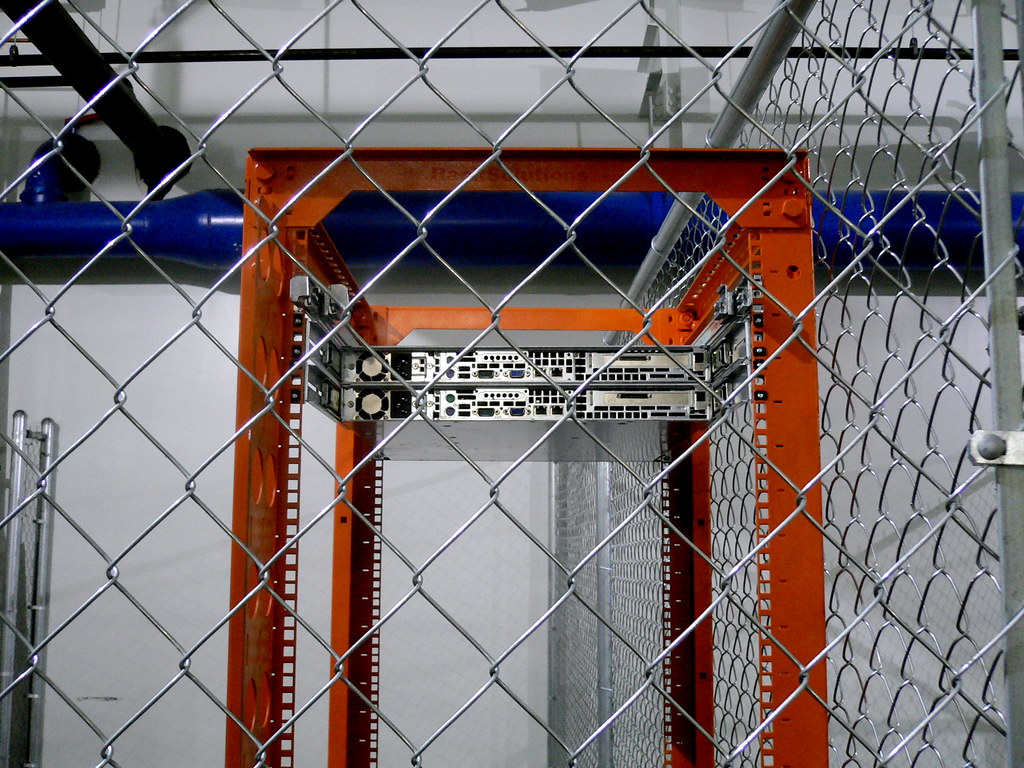Open Rack v3: what to expect from the new standard of architecture of server racks
It will find application in hyper-scalable data centers.

/ photo Not4rthur CC BY-SA
Why did you update the specification
Engineers from the Open Compute Project (OCP) presented the first version of the standard back in 2013. He described the modular and open design of racks for data centers 21 inches wide. This approach allowed to increase the ratio of effectively used rack space to 87.5%. For comparison, the 19-inch racks, which are the standard today, it is only 73%.
Additionally, engineers have changed the approach to power distribution. The main innovation was the 12-volt bus to which the equipment is connected. She eliminated the need to install their own power supply for each server.
In 2015, the second version of the standard was released . In it, the developers switched to the 48-volt model and reduced the number of transformers, which reduced the power consumption of the racks by 30%. Thanks to these features, the standard has become widespread in the IT industry. Racks have begun to actively use large IT corporations, telecommunications companies and banks.
')
Recently, developers have introduced a new specification - Open Rack v3. According to the authors of the OCP initiative, it is being developed for high-loaded data centers that process data for AI and MO systems. The hardware solutions introduced into them have a high power dissipation density. For their effective work required new design racks.
What is already known about Open Rack v3
The developers note that the new standard will be more flexible and versatile than v2, and also take all the best from previous versions - energy efficiency, modularity, compactness. In particular, it is known that he will continue to use 48-volt power sources.
The design of the new racks will have to improve air circulation and heat dissipation. By the way, for cooling equipment will use liquid systems. OCP members are already working on several solutions in this area. In particular, contact liquid circuits, heat exchangers mounted on the rear wall of the rack, and immersion systems are being developed.
Next, we present some of the physical parameters of the new racks:
| Form Factor, U | 48 or 42 |
|---|---|
| Rack width, mm | 600 |
| Stand depth, mm | 1068 |
| Maximum load, kg | 1600 |
| Operating temperature range, ° C | 10–60 |
| Working humidity,% | 85 |
| Cooling type | Liquid |
Opinions
The developers of the specification claim that in the future, Open Rack v3 will reduce the cost of IT systems in data centers. Schneider Electric has calculated that the second version of racks already reduces server maintenance costs by 25% compared to traditional designs. There is reason to believe that the new specification will improve this indicator.
Among the shortcomings of the standard, experts highlight the difficulty of adapting equipment and machine rooms to its requirements. There is a possibility that the cost of refurbishing the server will exceed the potential benefits of their implementation. For this reason, Open Rack is mostly focused on new data centers.

/ photo by Tim Dorr CC BY-SA
Another disadvantage include design features of the solution. The architecture of the open racks does not imply dust protection. Plus increases the likelihood of damage to equipment or cables.
Related projects
In March, another specification for the racks was released - Open19 System Level (to view the specification, you need to download a PDF file). The document was developed at the Open19 Foundation, where from 2017 they are trying to standardize approaches to creating data centers. We talked more about this organization in one of our posts .
The Open19 System Level standard describes a universal form factor for racks and sets requirements for network structure and power consumption. The Open19 team suggests using so-called block cages. They are modules with multiple chassis, in which you can place the desired hardware - servers or storage systems - in arbitrary combinations. Also in the design there are power shelves, switches, network switches and cable management system.
For cooling, a direct-to-chip immersion liquid cooling system based on dry water is used. The authors of the concept note that the architecture of Open19 increases the overall energy efficiency of the data center by 10%.
IT industry experts believe that in the future, projects like Open19 and Open Rack will allow building flexible data centers for working with IoT solutions faster, and will contribute to the development of 5G technologies and peripheral computing.
Posts from our Telegram channel:
- Why hard drives are less likely to break
- How to manage iron in the data center - two new technologies
- IT architecture of the future - who prepares for it and how
- How to place in the cloud 100% of the infrastructure - the case of the corporate client IT-GRAD
- Why companies use virtual machines, not containers
- Why not just take and implement the "green" technology in data centers
- Who supports cloud projects - talk about four open source funds
Source: https://habr.com/ru/post/446118/
All Articles